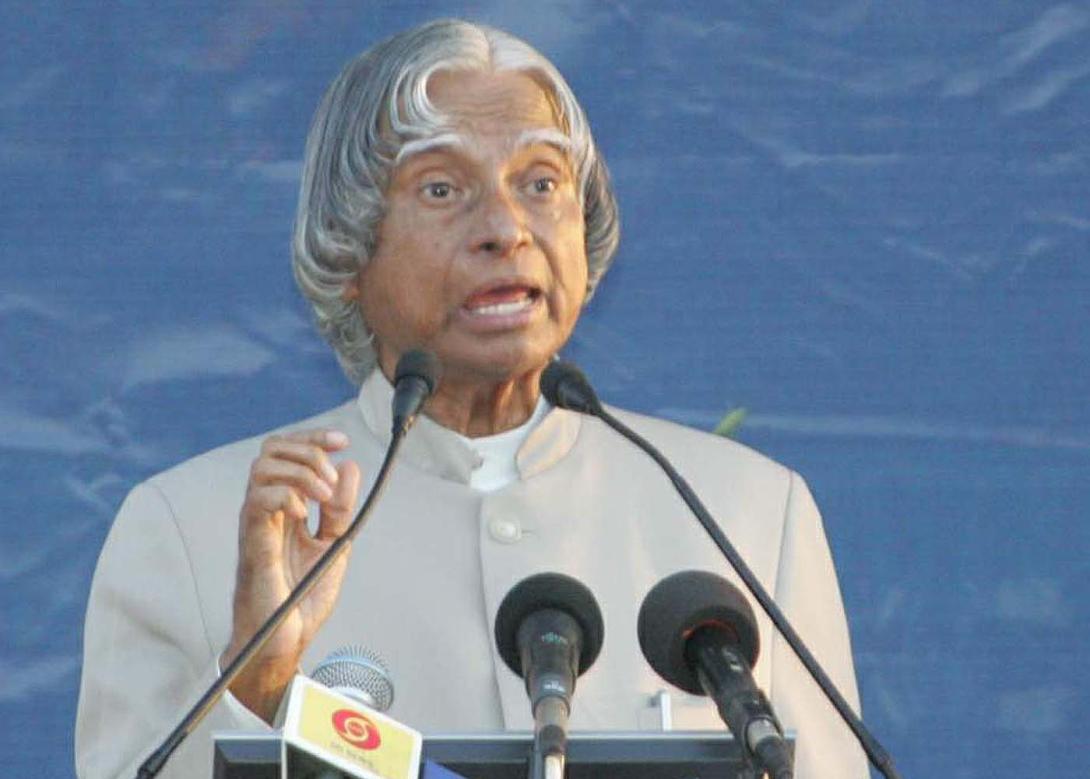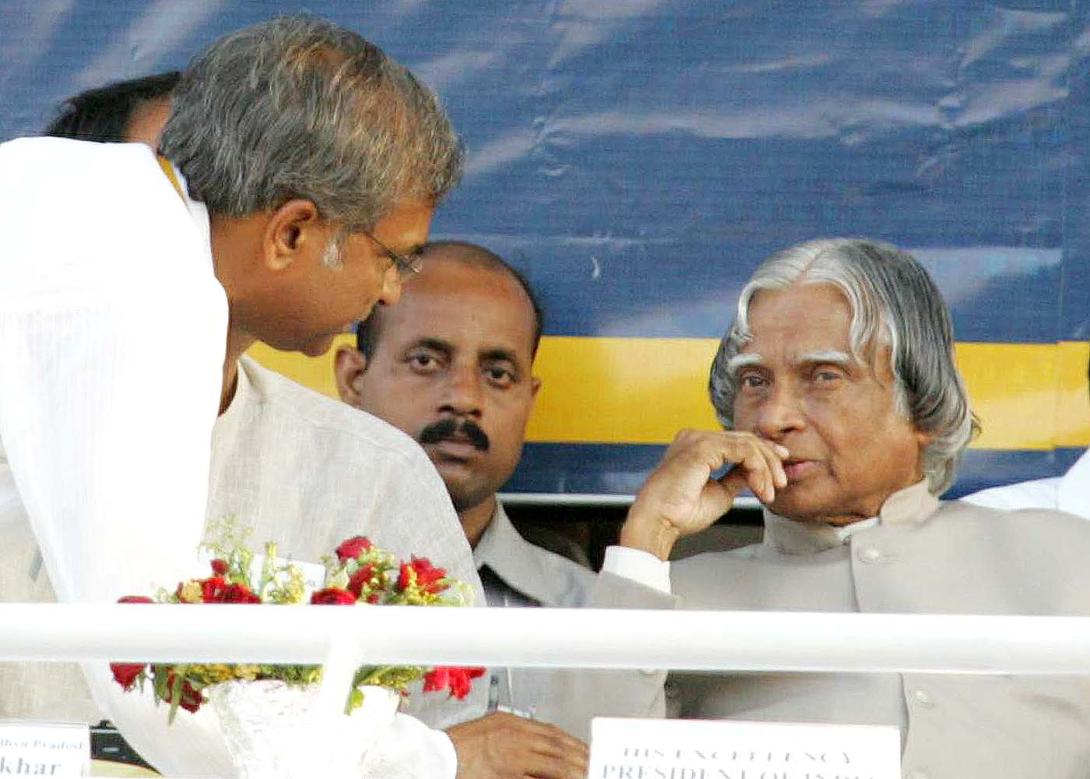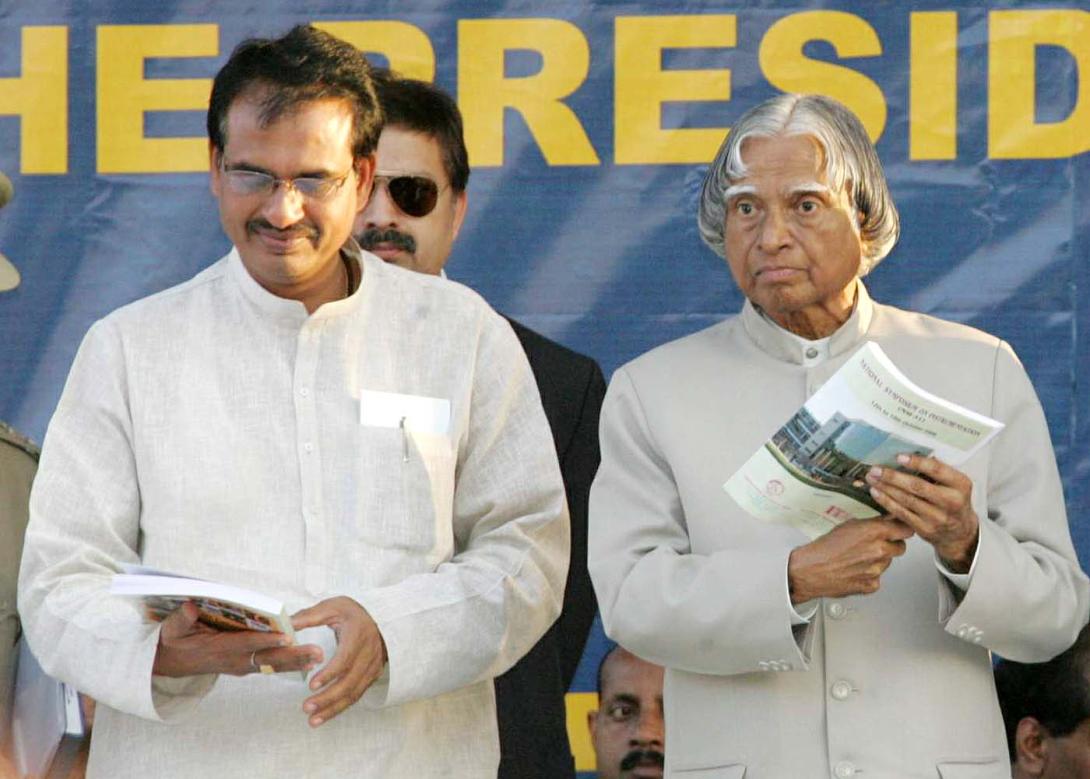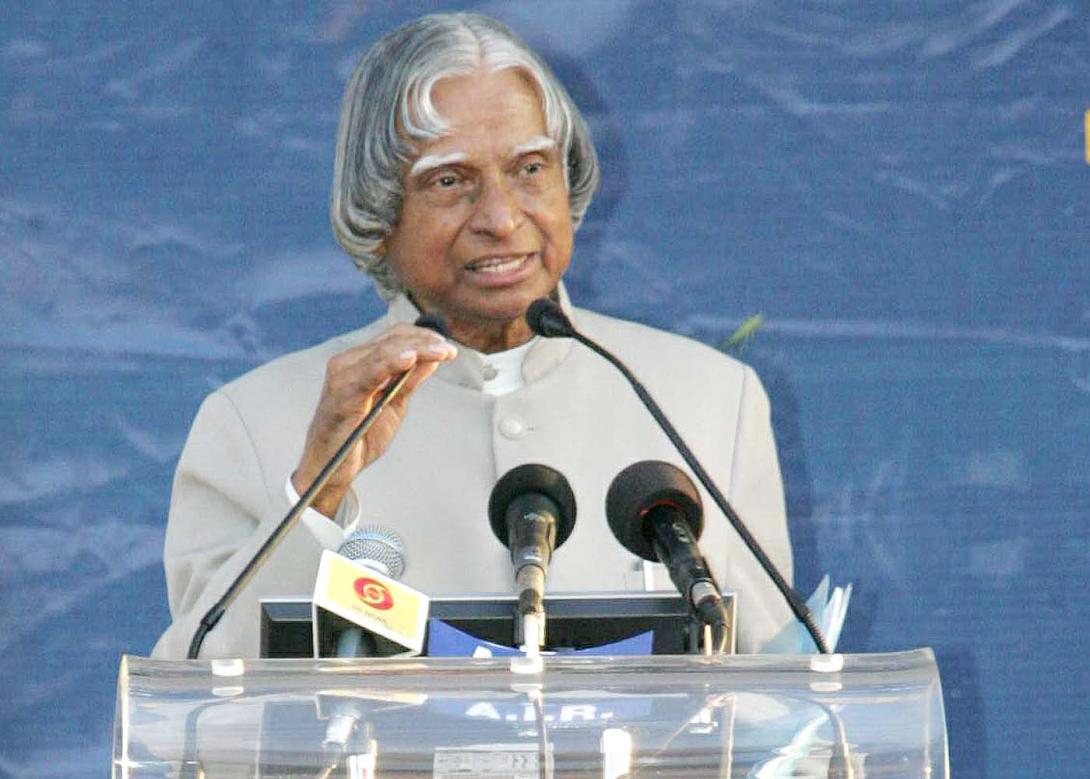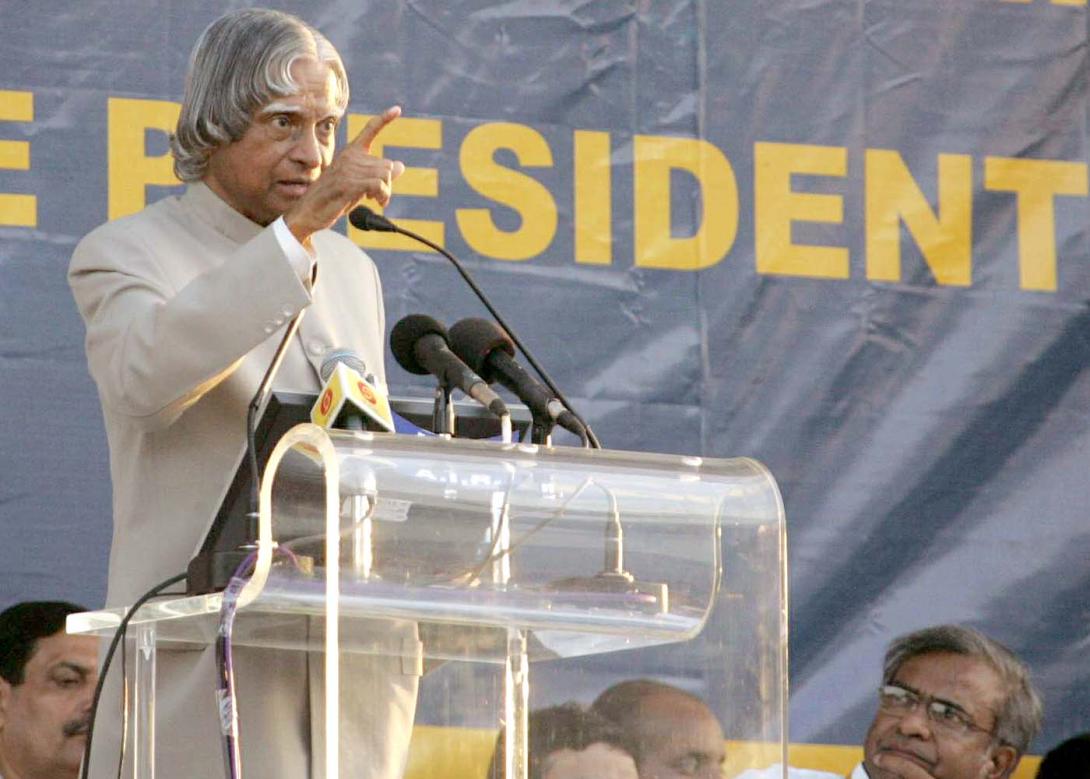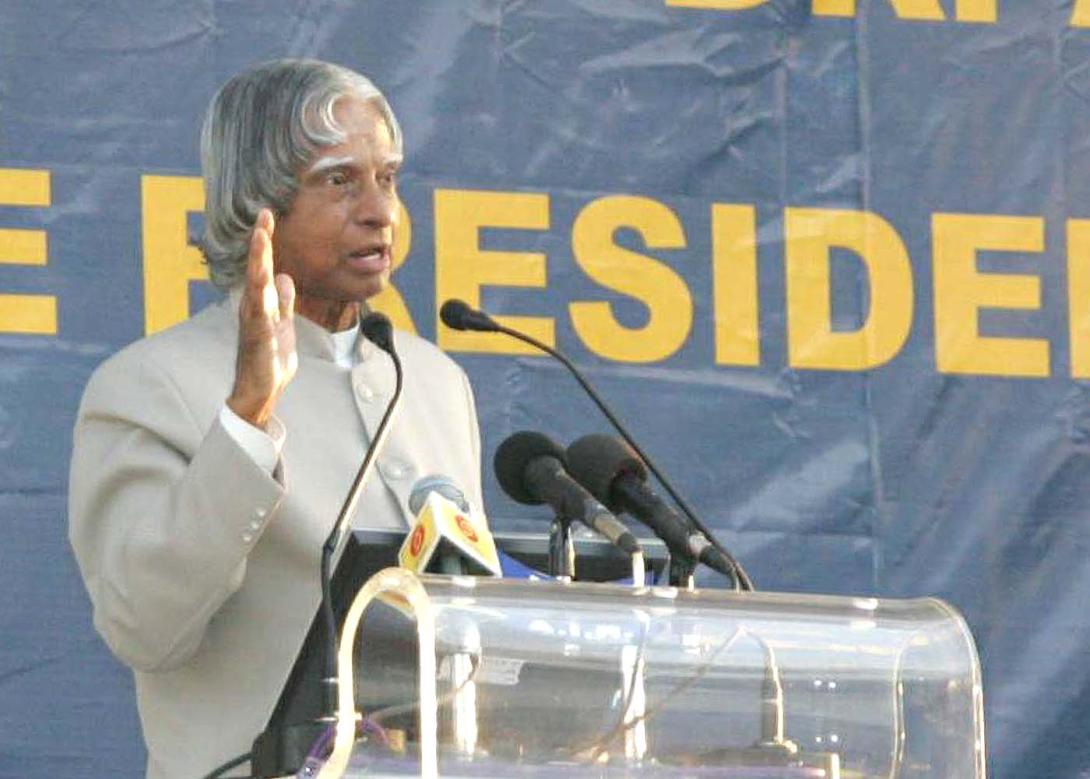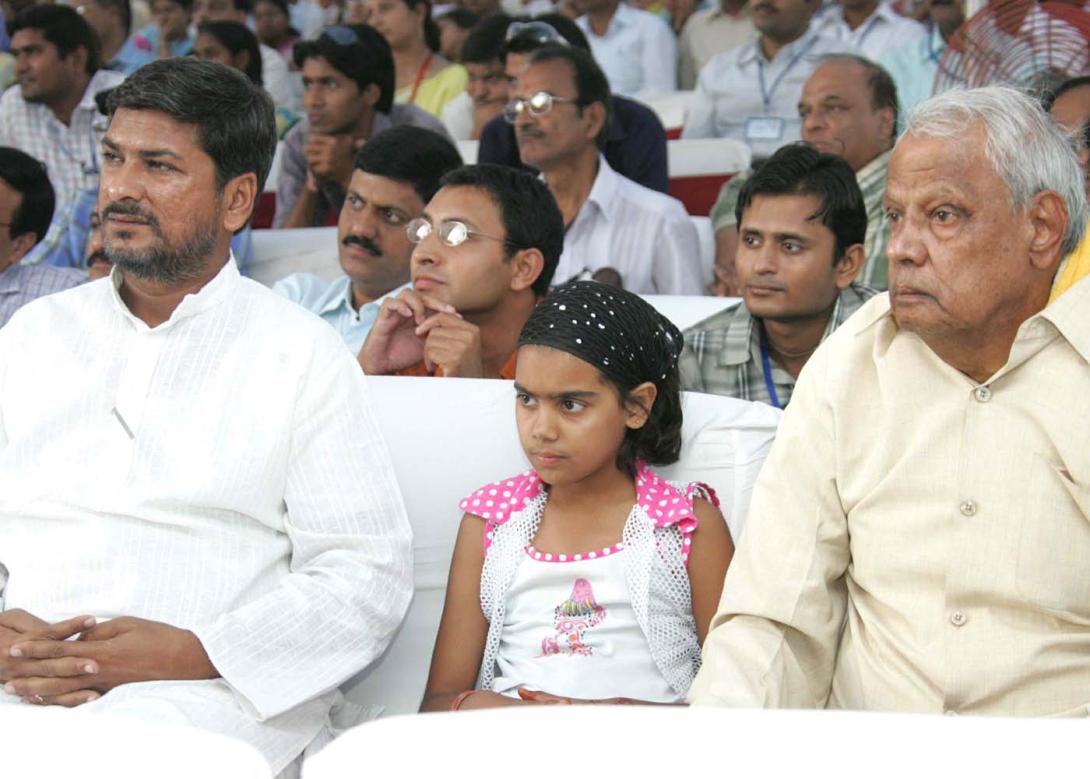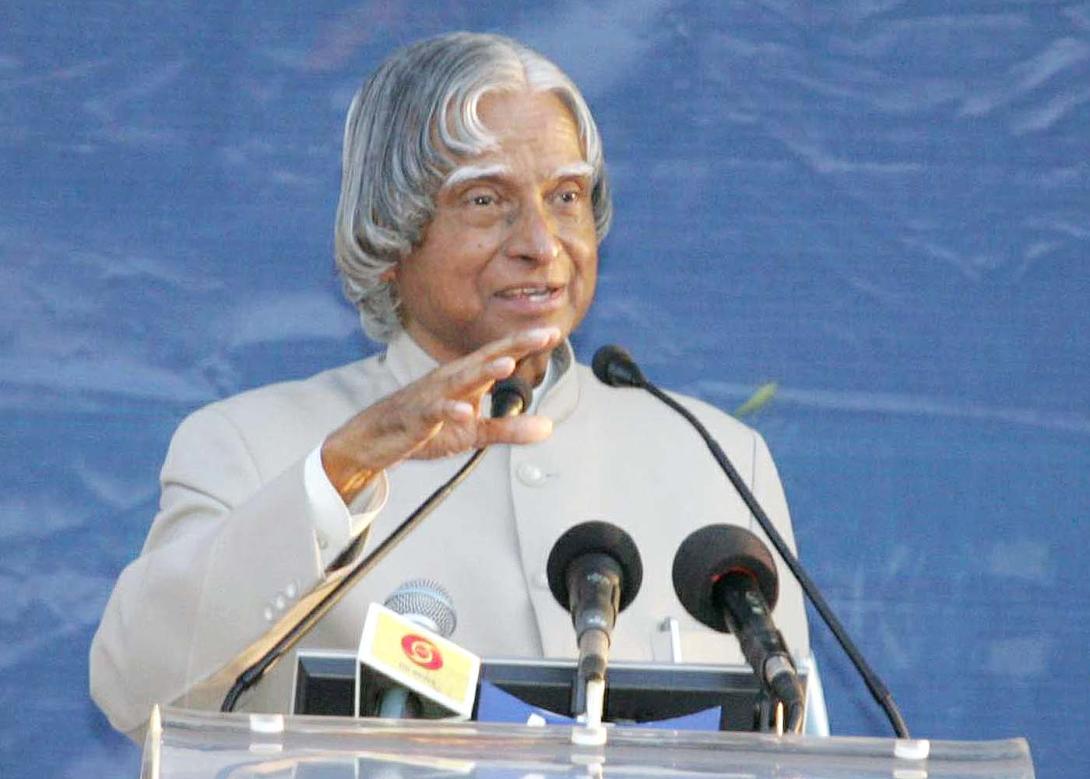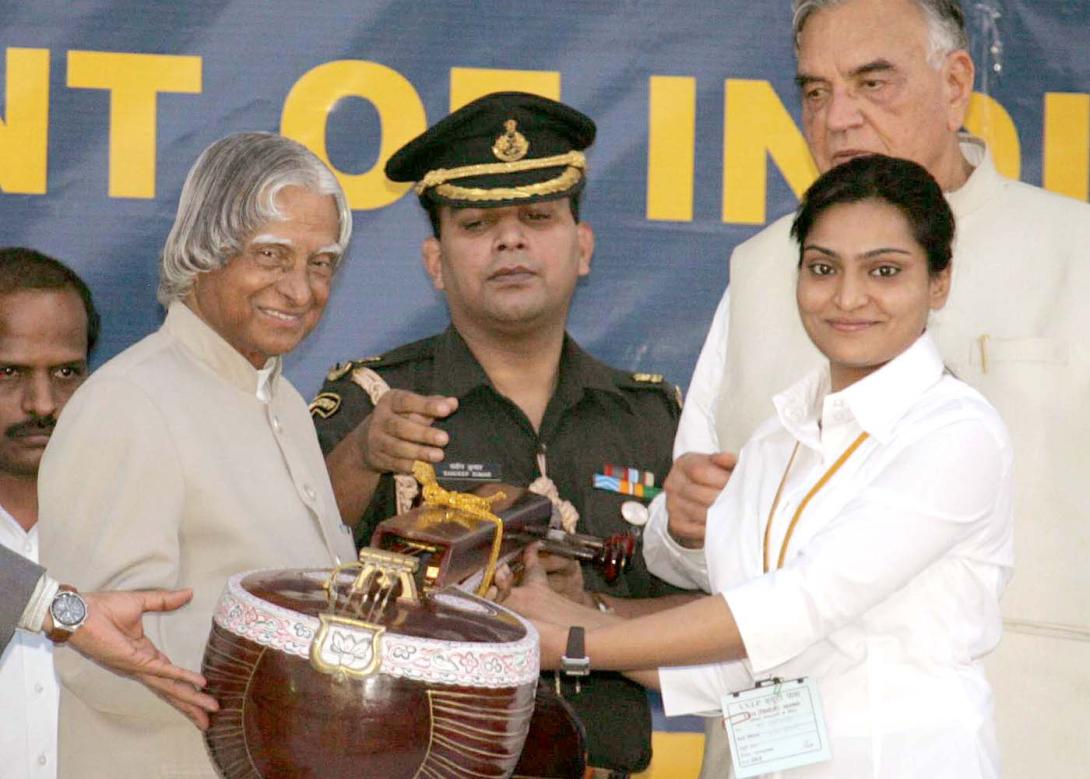Address at the Inauguration of the National Symposium of the Instrument Society of India and 4th Prof Satish Dhawan Memorial Lecture, Gwalior, Madhya Pradesh
Gwalior : 12-10-2006
Convergence of Technologies
I am delighted to participate in the inauguration of the Symposium with the focal theme ?Recent trends in Biomedical Instrumentation? and deliver the 4th Prof Satish Dhawan Memorial Lecture organized by Instruments Society of India in partnership with Institute of Technology Management, Gwalior. I greet the members of Instruments Society of India, scientists, technologists, and industrialists, members of the academia, medical professionals, students and distinguished guests. Biomedical instrumentation is an important area for the nation.
Since, I am in the midst of instrumentation specialists, I would like to share the special knowledge, we cherish of Prof Satish Dhawan in building his own instruments for his experiments. Following the traditions set my eminent scientists like Nobel laureate Sir C.V. Raman, Prof Satish Dhawan also built his equipment in house. He used innovative and inexpensive techniques find tuned for India?s needs and economic conditions without compromising the frontline research and innovation of quality comparable to the rest of the world. What is unique about Prof Dhawan is, that his engineering mind was perfect and he had the expertise of doing complex engineering tasks by himself. Particularly he conducted experiments in boundary layer research in aerodynamics flow using his own instruments at IISc wind tunnel system,. This quality proved to be a great source of learning for his co-workers, researchers and students.
Today, many of the instruments in the medical field are imported and they are prohibitively costly. Since the country has to cater to the medical needs of over one billion population, it is essential for us to embark on programmes to produce the essential biomedical instruments in the country in a cost effective way. The Symposium may like to address this problems and come up with recommendations which can convert India from being an importer of biomedical instruments to an exporter of biomedical instruments in the coming decade. This will be the greatest tribute paid to Prof Satish Dhawan by instrumentation professionals.
In remembrance of Prof. Satish Dhawan?s, technological, managerial and leadership contribution to the nation, I have selected the topic "Convergence of Technologies".
Convergence of Technologies
The information technology and communication technology have already converged leading to Information and Communication Technology (ICT). Information Technology combined with bio-technology has led to bio-informatics. Now, nano-technology is knocking at our doors. It is the field of the future that will replace microelectronics and many fields with tremendous application potential in the areas of medicine, electronics and material science. When Nano technology and ICT meet, integrated silicon electronics, photonics are born and it can be said that material convergence will happen. With material convergence and biotechnology linked, a new science called Intelligent Bioscience will emanate which would lead to a disease free, happy and more intelligent human habitat with longevity and high human capabilities. Convergence of bio-nano-info technologies can lead to the development of many healthcare systems using nano robots. Nano robots when they are injected into a patient, my expert friends say, it will diagnose and deliver the treatment exclusively in the affected area and then the nano-robot gets digested as it is a DNA based product, I have seen and experienced nano robots in several nano labs in South Korea.
Convergence of ICT, aerospace and Nano technologies will emerge and revolutionize the aerospace industry. This technological convergence will enable building of cost effective low weight, high performance payload, and highly reliable aerospace systems, which can be used for inter-planetary transportation.
Bio-informatics: The convergence of bioscience and IT into Bio-informatics has given the thrust to researchers for genomics-based drug discovery and development. Pressure is mounting over the pharmaceutical companies to reduce or at least control costs, and have a growing need for new informatics tools to help manage the influx of data from genomics, and turn that data into tomorrow's drugs.
Bio-informatics data play a vital role and emerging as a business model for the medical and pharmaceutical sector. Key areas such as gene prediction, data mining, protein structure modeling and prediction, protein folding and stability, macromolecular assembly and modeling of complex biological systems are progressing. IT has major role to play in these areas in bringing the tools to manage the high throughput experiments and the data generating, and sharing and integrating all the data in a meaningful way resulting into the detailed models of complex systems, particularly biological pathways.
Bio-Suite: I launched the Bio-Suite at Hyderabad on 14th July 2004, which is an important software package that caters to all aspects of computational biology from genomics to structure-based drug design. It incorporates the latest publicly known algorithms, as chosen by a panel of academic partners, and has been coded entirely by the Tata Consultancy Services (TCS) team, using the software engineering practices. It can be used by academic and R&D institutions, small and medium and large biotechnology companies. This bio-suite was developed by TCS in collaboration with Council for Scientific and Industrial Research (CSIR) and academic institutions including the IISc, for cost effective drug development in India.
Gene Chip: In 2004, I visited Dr. Cherian?s Medical Centre at Chennai. It is known as, International Centre for Biomedical Sciences and Technology (Research & Applications). There I interacted with Dr. Emmanuel, who is working in the area of Gene Chip. They have developed a Gene Chip which can be used for finding the existence of genetic diseases including coronary artery diseases or neuro defect in the baby during a certain stage of pregnancy itself. The chip could also be modified to suggest to the patient?s system to develop those chemicals, which in turn will help the patient recover from the present situation. The specialists assembled here may like to debate whether gene chip can be used for identifying the susceptibility of the baby to the allergic diseases in the advanced stage of pregnancy. Can medical bio-informatics help in finding a treatment regime for the mother, which may give immunity to the child from the allergic disease?
It is reported that gene differences between humans and most animals are very nominal. More than 90% of our DNA is similar. This property is a boon to researchers since animal models can be exclusively used for drug development for human diseases. Medical researchers are progressing further in this area for finding the application of Gene Chip as a diagnostic tool and as a treatment regime for allergic diseases and asthma. Now, I would like to present the progress made in nano-science and technology in India through some examples.
Water: Nano tube filter - water purification: The scientists from Banaras Hindu University have devised a simple method to produce carbon nanotube filters that efficiently remove micro-to nano-scale contaminants from water and heavy hydrocarbons from petroleum. Made entirely of carbon nanotubes, the filters are manufactured using a novel method for controlling the cylindrical geometry of the structure. The work was supported in part by the Ministry of Human Resource Development and Department of Science and Technology in India.
The filters are hollow carbon cylinders several centimeters long and one or two centimeters wide with walls just one-third to one-half a millimeter thick. They are produced by spraying benzene into a tube-shaped quartz mold and heating the mold to 900�C. The nanotube composition makes the filters strong, reusable, and heat resistant, and they can be cleaned easily for reuse.
The carbon nanotube filters offer a level of precision suitable for different applications. They can remove 25-nanometer-sized polio viruses from water, as well as larger pathogens, such as E.Coli and certain type of bacterias. The researchers believe this could make the filters adaptable to micro fluidics applications that separate chemicals in drug discovery.
This is a classic application of the latest in science ? Nano science, water purification. If properly used, this can help in lessoning the burden in our drinking water missions leading to the availability of safe drinking water that will result in minimizing the water borne diseases.
Healthcare: Typhoid Detection Kit: Typhoid Detection Kit has been developed by DRDE, Gwalior using the nano sensor developed by Prof. A.K. Sood, and his team from IISc, Bangalore. Typhoid fever caused by Salmonella typhi is a major health problem and an important challenge to health authorities of third world countries due to unsatisfactory water supply, poor sanitary conditions, malnutrition, emergence of antibiotic resistant strains etc. According to an estimate the worldwide incidence to typhoid fever is 16 million cases annually and death rate is 6 lakhs individual per year worldwide. In India, the morbidity due to typhoid varies from 102 to 2219/100,000 population in different parts of the countries. In some areas typhoid fever is responsible for 2-5% of all deaths.
In India for routine diagnosis for typhoid disease Widal test is performed with single serum sample which does not provide the correct diagnosis of infection. Therefore a Latex agglutination based test has been developed at DRDE, Gwalior using recombinant DNA technology and immunological technique for rapid diagnosis of typhoid infection. The test detects S. typhi antigen directly in patient?s serum within 1-3 minutes which is very important for initiating early treatment and saving human life.
A collaborative work has been carried out with Prof. A.K. Sood of Indian Institute of Science, Bangalore, the sensitivity of the test has been increased 30 times by applying a small electric charge (1.5 V). With this improvement, extreme low concentrations of the antigen in clinical sample can be detected. Moreover, very small quantity of clinical sample as low as 2-3 �l is required to perform the above test as compared to 10-15 �l sample required for latex agglutination test.
Power: Gas flow induced generation of voltage from solids: Prof AK Sood, professor of Physics at IISc and his student Shankar Ghosh has studied, experimented and found that the liquid flow in carbon nano tubes can generate electric current. One of the most exciting applications to emerge from the discovery is the possibility of a heart pacemaker ? like device with nano-tubes, which will sit in the human body and generate power from blood. Instead of batteries, the device will generate power by itself to regulate defective heart rhythm. The IISc has transferred the exclusive rights of the technology to an American start-up Trident Metrologies. They will develop the prototypes and commercialize the gas flow sensors.
Drug delivery system: A research group headed by Professor A. N. Maitra of the University of Delhi?s Chemistry Department has developed 11 patentable technologies for improved drug delivery systems using nanoparticles. Four of these processes have been granted U.S. patents. One of the important achievements at the initial stage of drug delivery research was development of a reverse micelles based process for the synthesis of hydrogel and ?smart? hydrogel nanoparticles for encapsulating water-soluble drugs. This method enabled one to synthesize hydrogel nanoparticles of size less than 100nm diameter. This technology has been sold to Dabur Research Foundation in 1999.
Another technology has been transferred to industry deals with nanoparticle drug delivery for eye diseases. Traditionally, steroids have been used extensively in the treatment of ocular inflammatory disease and allergies. However, prolonged use of steroids has many side effects. The Delhi university group?s process uses nanoparticles to encapsulate non-steroidal drugs. ?This process improves the bio-availability of the drug on the surface of the cornea?. The technology has been transferred to Chandigarh-based Panacea Biotech Ltd.
Now, I would like to discuss about world knowledge platform which will enable design, develop and produce systems and products based on convergence of technologies using the core competence of partner countries.
World Knowledge Platform
During my recent visit to Singapore, Philippines and Republic of Korea early this month, I have put forward the concept of ?World Knowledge Platform?, which will integrate the core competencies of the partner countries to develop knowledge products. This platform will enable joint design, development, cost effective production and marketing of the knowledge products in various domains based on the core competence of partner nations to international market.
Knowledge GRID: Initially, the mission of World Knowledge Platform is to connect and network the R&D Institutions, Universities and Industries using fiber broadband from the partner nations on selected R&D Missions. The underground and underwater fiber cable infrastructure already exists between the many partners. It is only waiting to be lighted up with state-of-the-art optical networks and to ignite the minds of the knowledge workers. This knowledge GRID will support multitude of seamless connections supporting both synchronous and asynchronous communication, carrying either text or audio or video. We can then use this network in the academic environments to teach courses online and share expensive equipments remotely. In the Industrial environment, it can be used to design complex systems ? even ones that are as complex as an aircraft in a collaborative way using virtual prototyping concepts in the cyber space.
In India, we have today an example of a successful joint venture which harnessed the core competencies of two nation India and Russia, who have different cultures, languages and design standards. The product which has come out is of world class, much ahead of other countries due to the joint working of best of minds from both countries. This proves that if the core competencies of nations are combined, best of knowledge products can emanate well ahead of time.
Missions of World Knowledge Platform: The convergence of Bio, Nano and ICT is expected to touch every area of concern to the humanity. The ?World Knowledge platform? will take up the missions, in some of the areas given below, which are of utmost urgency to all of us to make our world a safe, sustainable and peaceful and prosperous place to live:
1. Energy: exploration, storage, production and conversion
2. Water: treatment and desalination
3. Healthcare: Diagnosis, drug delivery system
4. Food: preservation, storage and distribution
5. Knowledge products :Hardware, Software and Networking Products
6. Automobile: Hardware and embedded software integration
7. Gene Characterization, Stem Cell research and molecule to drug towards the diagnostic and treatment of the diseases like Cancer and Diabetics.
8. Herbal and natural products, sharing experiences with modern bio products.
9. Tourism and related services
In addition to the areas mentioned above, areas such as electronics, ICT and Automobile Sector may also be focused especially in the areas of design, development leading to productionization for meeting the market demands of the respective countries and also for world market. The core competence of India is software and the core competencies of the other partner nations are hardware and software, it can lead to design, development and marketing of world class systems that is equally dominated by the software intelligence and hardware innovation. The world knowledge platform will also evolve a virtual design centre with the participation of collaborating countries.
Conclusion
In conclusion, I would like to share one important experience I had, while working with Prof Sathish Dhawan who was the chairman of ISRO. While I was working at ISRO, I had the best of experience which won't come from any university. I will narrate that incident. I was given a task by Prof Satish Dhawan the then Chairman, ISRO and Director, Indian Institute of Science, to develop the first satellite launch vehicle SLV-3, to put ROHINI Satellite in orbit. This was one of the largest high technology space programmes undertaken in 1973. The whole space technology community, men and women, were geared up for this task. Thousands of scientists, engineers and technicians worked resulting in the realization of the first SLV-3 launch on 10th August 1979. SLV-3 took off in the early hours and the first stage worked beautifully. But the mission could not achieve its objectives, as the control system in 2nd stage malfunctioned. There was a press conference at Sriharikota, after the event. Prof. Dhawan took me to the press conference. And there he announced that he takes responsibility for not achieving the mission, even though I was the project director and the mission director. When we launched SLV-3 on 18th July 1980, successfully injecting the Rohini Satellite in to the orbit, again there was a press conference and Prof. Dhawan put me in the front to share the success story with the press. What we learn from this event is that the leader gives the credit for success to those who worked for it, and leader absorbs and owns the responsibility for the failure. This is the leadership. The scientific community in India has the fortune to work with such leaders, which resulted in many accomplishments. This success generated great happiness among all my team members. This is an important lesson for scientific and technological team.
With these words, I inaugurate the symposium with a focal theme ?Recent trends in Biomedical Instrumentation?. My best wishes to the organizers and the participants of this symposium success in their mission of designing, developing and delivering cost effective state-of-the-art bio-medical instrumentation to the medical community.
May God bless you.

